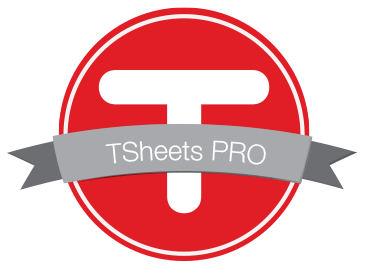Are you interested in being known for your extraordinary customer service? Or perhaps you just want your customers to feel like it’s easy to work with you or purchase from you. If so, try these five tips for five-star client service.
1. A good old-fashioned handwritten thank you note.
Almost extinct, this customer pleaser shows you are willing to go the extra mile for a personal touch and connection with your client. You can purchase boxes of thank you notes from any stationery store or order them with your company logo from a local printer.
2. Remember your customer’s preferences.
High-end hotels are good at remembering what you like, and almost any business can add this idea by using a CRM – customer relationship management system – that stores customer preferences, order history, last conversations, and any notes you want to remember about the client. The trick is keeping the system notes updated and using them when it counts.
3. Deliver an unexpected extra.
When your customer least expects it, give them more than what they paid for. This manifests itself in many ways, depending on your business type. Here are some examples:
- Restaurants: Give an appetizer, dessert, or coffee at no charge or pick up the bill of a regular once in a while.
- Retail or offices: Offer an unexpected beverage and fruit tray or snacks like you would find at a spa or country club.
- Real estate: Provide a list of local phone numbers, a fancy map or GPS app, or coupons to restaurants you partner with.
- Construction: Offer a tool, a warranty, a list of reliable repairmen, or a full set of replacement lightbulbs.
- Landscaping: Offer a birdfeeder, a fertilizer schedule, or a lawn tool.
- Any office: Partner with a business that has your same client base and exchange coupons so that you have a book of them to give to all your clients.
4. Give clients your cell number.
Giving clients your personal or business cell number is not as risky as you might think. Very few clients will actually call you. Surprisingly, the goodwill you gain by sharing your personal number far outweighs any disruption. But here’s a warning – don’t share your number with sales reps of vendors; you’ll get relentless calls every day from them.
5. Offer a VIP membership.
Some customers care about and are willing to pay more for excellent service, and others don’t. Separate your customer base by offering a VIP membership. By paying a nominal fee each year, these members get priority access to your appointment time, sales, overnight shipping, or whatever else you can distinguish. The good news is it’s a new revenue stream as well.
Choose one of these ideas and implement it to increase your customer service to five stars.
I know that many of you are wondering if you should upgrade to the new Windows 10 operating system. It has been hard to ignore the constant reminders of this FREE upgrade. Every time we turn on our computers, there it is, asking us to Upgrade Now. Some of us have even had a surprise automatic installation of the newest operating system while we were sleeping!

Microsoft is offering this software for free until the end of July 2016, after which they are going to charge a fee – currently starting at $149 per system for the Home Edition – they have not yet released any pricing for the Professional versions of the software. If you are currently running Windows 8/8.1, then you may wish to consider the update to Windows 10, but please read further.
At New Business Directions, LLC, we have decided to stay with the Windows 7 platform and not to upgrade to Windows 10. Microsoft will still be issuing updates for Windows 7 until 2021 but will not offer any phone or online support for the product.
There have been many issues with the installation of Windows 10 especially in a networked environment and the software needs a lot of tweaking to network correctly and play with other devices – such as printers. We see no real advantage to updating to Windows 10 and we have found it to actually hinder some programs from running properly, specifically QuickBooks and Point of Sale.
Effective December 1, 2016, federal overtime regulations will change and may affect how you are paying your employees. These overtime updates will affect 4.2 million workers across the country.
The new rules will raise the salary overtime-eligibility threshold from $455/week to $913 ($47,476 per year). This new threshold will increase every three years. Salaried workers already entitled to overtime will get increased protection.
Employers have a choice of three actions they can take to employees who become eligible for overtime that weren’t before.
- Pay time-and-a-half for overtime work.
- Raise worker’s salaries above the new threshold.
- Limit worker’s hours to 40 per week.
Let’s say you have an employee that earns $500 per week and works 50 hours a week. Previously, you didn’t pay overtime, but beginning December 1, 2016, you will need to. At $12.50 per hour, you would owe them the regular $500 plus 10 hours of overtime at $187.50.
Let’s say you have an employee earning $800 per week and they work 50 hours. Previously, you didn’t pay overtime, but now you will need to consider it. You could pay them overtime, which works out to a weekly pay of $1100. Or you can choose to give them a raise to $913 per week – the new threshold – and continue to exempt them from overtime. The latter is the lowest cost alternative.
In both cases above, it may be cheaper to hire an additional part-time worker to work the 10 extra hours per week.
You can find more about the new overtime law here:
https://www.dol.gov/featured/overtime/
And if you have any questions about your payroll, feel free to reach out anytime.

The New Business Directions Team is bringing the #1 employee-rated and requested Time Tracking Software to you. Sondra Love, Wayne Kukuruza, and Rhonda Rosand, CPA have recently joined the 6000+ TSheets PRO community by participating in an exclusive TSheets PRO certification course accredited by CPAacademy.org.So what exactly is TSheets? TSheets is a time tracking and scheduling software designed for businesses that track, manage, and report time. TSheets provides the alternative to paper timesheets and/or punch cards to simplify human resource and data processing roles for companies of all sizes.
But here’s the best part, TSheets fully integrates with QuickBooks by syncing accurate timesheets to your QuickBooks file and eliminating manual, duplicate time entries. Tracked and approved time can now be easily exported to either QuickBooks® Online or Desktop with just one click. Management can then use their favorite tools within QuickBooks to process payroll, calculate job costing, and create invoices in a more simplified work flow.
TSheets is also a scheduling software making it faster and easier to build and share schedules with employees, assign jobs, and alert shifts while increasing profitability and improving communication. In other words, we want to keep your workforce running like a well-oiled machine.
Oh, and have I mentioned their amazing customer service department? The TSheets team who’s behind the product is just as amazing as the software itself. Customer service team is passionate about their customers and provides exceptional support in times of need. They make your entire TSheets experience FUN and might even give you a smile or two.
The best cakes have layers and layers of different delicious flavors to enjoy. Stacked on top of one another, each layer is baked separately and becomes part of the whole. Like a layer cake, your business expenses have layers of meaning to them. When you can understand how expenses play a part in profit, you can manage them better.
Here’s how to make a layer cake of your business expenses. Let’s start with the most direct expenses.
Direct Costs
If you have inventory you will have a balance in the Cost of Goods Sold account. It should represent how much you paid for product or inventory that you are selling. It is the most direct expense of all the expenses; if you don’t spend this money, you would not have a product.
If you sell services, you should not have a balance in Cost of Goods Sold, but you will have direct expenses that are tied to performing your services. These might include labor from wages of the employees who carry out the services for clients. Any supplies directly involved with delivering services should be included as well.
You may also have other direct costs related to selling specific products or to servicing specific accounts.
Indirect Costs
The next layer includes indirect expenses. These expenses do not make up your product directly and might contribute to several different lines of products. Indirect costs might be attributable to a group of products or projects and can be apportioned accordingly.
Overhead
Although overhead is technically a form of indirect cost, it’s good to create a separate layer for it. It includes management salaries, rent, utilities, and other fixed costs that cannot be directly allocated to a product or service.
Assembling the Layers
A wonderful exercise is to classify each of your expense accounts in your Chart of Accounts as direct, indirect, or overhead. In that way, you can see how each account contributes to the costs of running your business. Some questions to ask yourself:
- What is my gross margin before indirect costs and overhead?
- What is my gross profit after indirect costs and before overhead costs?
- How can I cut down on any of these categories of expense?
- What is my breakeven volume in sales before overhead is factored in?
- Can my profit margin be changed if I spent less in a certain area?
This layered view is just another way to view the financial aspects of your business and can help you make better decisions down the road.
You can also break the layers down even further by classifying the expenses as critical and non-critical. This will help you determine where best to invest while maintaining the level of profit you desire.
You can’t manage what you don’t measure. Layering your expenses will help you have your cake and eat it too. And if we can help, just reach out as always.
 New Business Direction LLC
New Business Direction LLC
